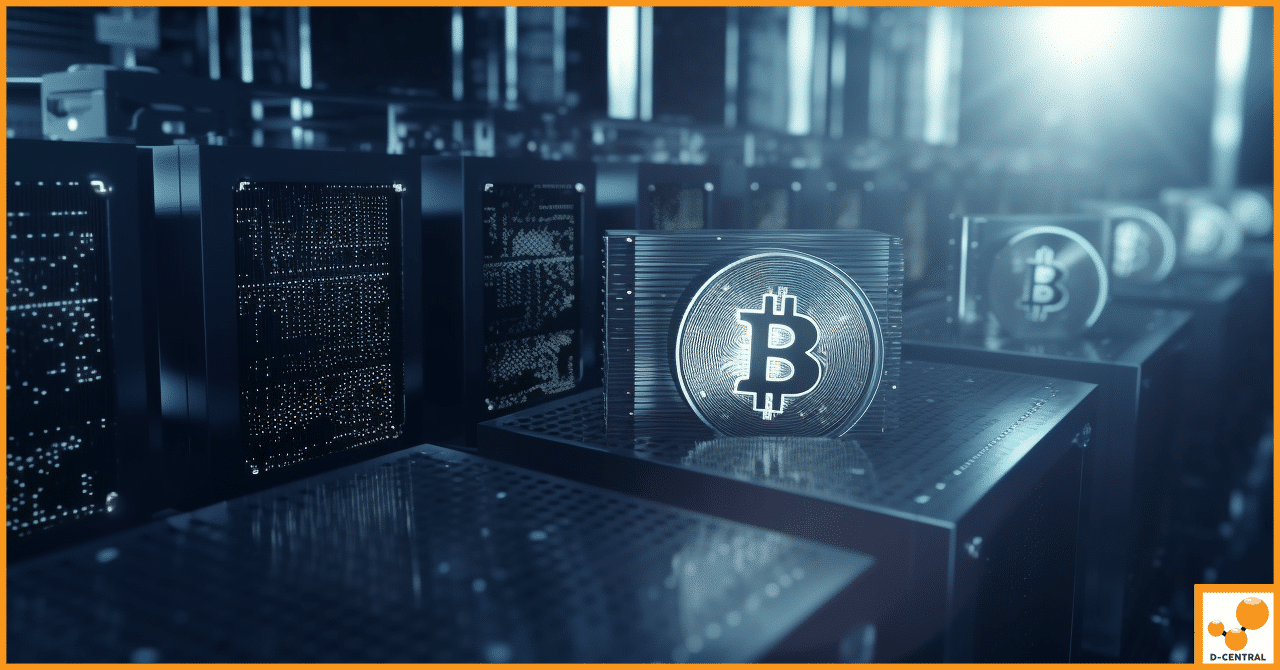
The Truth About Bitcoin Price Manipulation: Understanding Market Dynamics
Bitcoin, the pioneering cryptocurrency, has captivated the financial world since its inception in 2009. As a decentralized digital currency, it
4479 Desserte Nord Autoroute 440, Laval, QC H7P 6E2

In the rapidly evolving world of digital currencies, cryptocurrency mining has emerged as a cornerstone activity, underpinning the very fabric of blockchain technologies and their decentralized ethos. This process, which involves validating transactions and adding them to the blockchain ledger, is not only crucial for maintaining the integrity and security of cryptocurrencies like Bitcoin but also serves as the method through which new coins are introduced into the system. However, the significance of cryptocurrency mining transcends its functional role; it represents a burgeoning industry that has captivated investors and technologists alike, driven by the allure of unlocking substantial rewards through computational prowess.
As the industry scales, so too do the challenges, particularly in the realm of operational efficiency and environmental sustainability. Central to these challenges is the issue of heat management. High-performance mining rigs, tasked with solving complex cryptographic puzzles, generate considerable amounts of heat, necessitating robust cooling solutions to maintain optimal performance and hardware longevity. Traditional air cooling methods, while prevalent, fall short in addressing the needs of high-density mining operations, leading to increased energy consumption, elevated costs, and a larger carbon footprint.
Enter immersion cooling, a revolutionary cooling solution that promises to redefine the paradigms of mining efficiency and sustainability. This innovative approach involves submerging cryptocurrency mining hardware in a specially formulated, non-conductive liquid, which absorbs and dissipates heat more effectively than air. The result is a dramatic reduction in cooling energy requirements, enhanced hardware performance, and an extended lifespan for mining equipment.
The adoption of immersion cooling in cryptocurrency mining operations is not merely a technological upgrade; it represents a strategic investment poised to unlock unprecedented levels of profitability and sustainability. By significantly lowering operational costs and mitigating environmental impact, immersion cooling stands at the forefront of a new era in cryptocurrency mining, where efficiency and eco-friendliness converge. This article delves into the multifaceted benefits of immersion cooling, exploring how it serves as a catalyst for transforming mining operations into more profitable and sustainable ventures, thereby ensuring their viability in an increasingly competitive and environmentally conscious market.
Immersion cooling is an advanced thermal management technique that involves submerging electronic components, such as cryptocurrency mining hardware, in a non-conductive liquid. This liquid is specifically engineered to have excellent thermal conductive properties without conducting electricity, thereby safely interacting with electronic devices. The basic principle behind immersion cooling is the liquid’s ability to absorb and dissipate heat more efficiently than air, providing superior cooling to high-performance computing equipment like ASIC miners and GPUs used in cryptocurrency mining.
Immersion cooling can be broadly categorized into two types: single-phase and two-phase.
An effective immersion cooling system comprises several key components:
The process of immersion cooling in mining operations begins with the installation of mining hardware, such as ASIC miners, within the cooling tanks filled with the non-conductive liquid. As the miners operate and generate heat, the liquid absorbs this heat directly from the surface of the components, significantly reducing the operating temperature of the hardware.
Compared to traditional air cooling methods, which rely on air flow generated by fans to remove heat from the surface of the components, immersion cooling offers several advantages:
In essence, immersion cooling revolutionizes the thermal management of cryptocurrency mining operations, offering a more efficient, reliable, and sustainable approach to managing the intense heat generated by mining hardware.
The shift towards immersion cooling in cryptocurrency mining operations is not just a technical upgrade but a strategic economic decision. The economic rationale for adopting immersion cooling hinges on its potential to significantly reduce both capital and operational expenditures, enhance energy efficiency, and deliver compelling long-term financial benefits.
In summary, the economic rationale for immersion cooling in cryptocurrency mining operations is compelling. By addressing the dual challenges of high energy consumption and heat management with an efficient and sustainable solution, immersion cooling not only reduces operational costs but also enhances the profitability and longevity of mining ventures. As the cryptocurrency mining industry continues to evolve, the economic advantages of immersion cooling position it as a strategic investment for forward-thinking miners seeking to maximize their ROI.
The adoption of immersion cooling technology in cryptocurrency mining operations brings a multitude of operational benefits, ranging from enhanced hardware performance and longevity to significant noise and space reduction, all while contributing positively to environmental sustainability.
In conclusion, immersion cooling offers a comprehensive suite of operational benefits that enhance the efficiency, profitability, and sustainability of cryptocurrency mining operations. By addressing key challenges associated with traditional cooling methods, immersion cooling emerges as a pivotal technology for the future of environmentally responsible and economically viable mining practices.
Implementing immersion cooling in cryptocurrency mining operations involves careful planning, selection of appropriate components, and adherence to maintenance and safety protocols. By following best practices and learning from industry case studies, miners can optimize their setups for maximum efficiency and safety.
The exploration of immersion cooling technology within the realm of cryptocurrency mining operations has unveiled a transformative approach to managing the intensive thermal demands inherent to digital currency mining. This innovative cooling solution not only addresses the critical challenges of heat management but also aligns with the broader objectives of enhancing operational efficiency, maximizing return on investment (ROI), and fostering environmentally responsible mining practices.
The key benefits of integrating immersion cooling into mining operations are manifold. Firstly, the technology significantly enhances hardware performance and longevity, primarily through its superior cooling efficiency, which also opens up avenues for safe overclocking, thereby boosting mining outputs. Secondly, immersion cooling markedly reduces operational noise and optimizes space utilization, contributing to more scalable and adaptable mining setups. Lastly, and perhaps most importantly, the shift towards immersion cooling represents a conscious move towards sustainability, offering substantial reductions in energy consumption and, consequently, a lower carbon footprint for mining operations.
The strategic importance of immersion cooling transcends its immediate operational advantages, positioning it as a cornerstone technology for future-proofing cryptocurrency mining endeavors. In an industry characterized by fierce competition and fluctuating market dynamics, the ability to reduce operational costs while simultaneously enhancing mining efficiency and sustainability is invaluable. Immersion cooling not only ensures the longevity and reliability of mining hardware but also mitigates the environmental impact of mining activities, aligning with global calls for more sustainable industrial practices.
As the cryptocurrency mining sector continues to evolve, the adoption of immersion cooling stands as a testament to the industry’s capacity for innovation and its commitment to addressing both economic and environmental challenges. Mining operators, from small-scale setups to large-scale farms, are encouraged to explore the potential of immersion cooling solutions, not just as a means to enhance profitability but also as a step towards more sustainable mining practices.
For those intrigued by the prospects of immersion cooling and its applicability to their mining operations, the path forward involves informed decision-making and strategic planning. Engaging with experts in immersion cooling technology can provide valuable insights, tailored advice, and comprehensive solutions that align with specific operational needs and objectives. Whether you are at the nascent stages of considering immersion cooling or are ready to transition, expert consultations can demystify the process, ensuring a seamless integration of this groundbreaking technology into your mining operations.
In conclusion, immersion cooling emerges not just as a technological solution but as a strategic asset in the cryptocurrency mining landscape, promising a harmonious blend of efficiency, profitability, and sustainability. The invitation to explore and embrace immersion cooling is open to all forward-thinking miners poised to redefine the standards of mining operations in the digital age.
What is immersion cooling in cryptocurrency mining?
Immersion cooling is an advanced thermal management technique that involves submerging cryptocurrency mining hardware in a non-conductive liquid. This liquid effectively absorbs and dissipates heat, offering superior cooling to high-performance computing equipment used in mining.
What are the types of immersion cooling?
There are two types of immersion cooling: single-phase and two-phase. Single-phase immersion cooling keeps the cooling liquid in a liquid state, while two-phase immersion cooling involves a phase change where the liquid boils, vaporizes, and then condenses back into a liquid.
What are the components of an immersion cooling system?
An immersion cooling system typically comprises cooling tanks to hold the non-conductive liquid and hardware, heat exchange systems to transfer heat outside, and the non-conductive coolants, which possess high thermal conductivity and electrical insulation properties.
What are the benefits of immersion cooling in mining operations?
Immersion cooling offers several benefits, including increased energy efficiency, reduced operational costs, enhanced hardware performance and longevity, noise reduction, and a lower environmental impact due to decreased energy consumption.
How does immersion cooling contribute to environmental sustainability?
Immersion cooling significantly reduces energy requirements for cooling mining operations, leading to lower electricity consumption and a reduced carbon footprint. It aligns with sustainable mining practices by enhancing the longevity of hardware and potentially using recyclable materials.
What should be considered when designing an immersion cooling setup for mining?
Designing an immersion cooling setup involves assessing the scale, space, and energy needs of the operation, selecting compatible components and coolants, and planning for future scalability. Safety and maintenance protocols should also be established.
What operational benefits does immersion cooling offer for cryptocurrency mining?
Immersion cooling allows for safe overclocking, extended hardware lifespan, quiet operation, compact and scalable setup, and reduced environmental impact. It provides efficiency, profitability, and sustainability in mining operations.
DISCLAIMER: D-Central Technologies and its associated content, including this blog, do not serve as financial advisors or official investment advisors. The insights and opinions shared here or by any guests featured in our content are provided purely for informational and educational purposes. Such communications should not be interpreted as financial, investment, legal, tax, or any form of specific advice. We are committed to advancing the knowledge and understanding of Bitcoin and its potential impact on society. However, we urge our community to proceed with caution and informed judgment in all related endeavors.
Related Posts

Bitcoin, the pioneering cryptocurrency, has captivated the financial world since its inception in 2009. As a decentralized digital currency, it

As Bitcoin mining continues to gain traction, the race to reach one zettahash per second intensifies. This significant milestone not

In the ever-evolving landscape of digital currencies, Bitcoin stands as a pioneering force, reshaping our understanding of financial transactions in